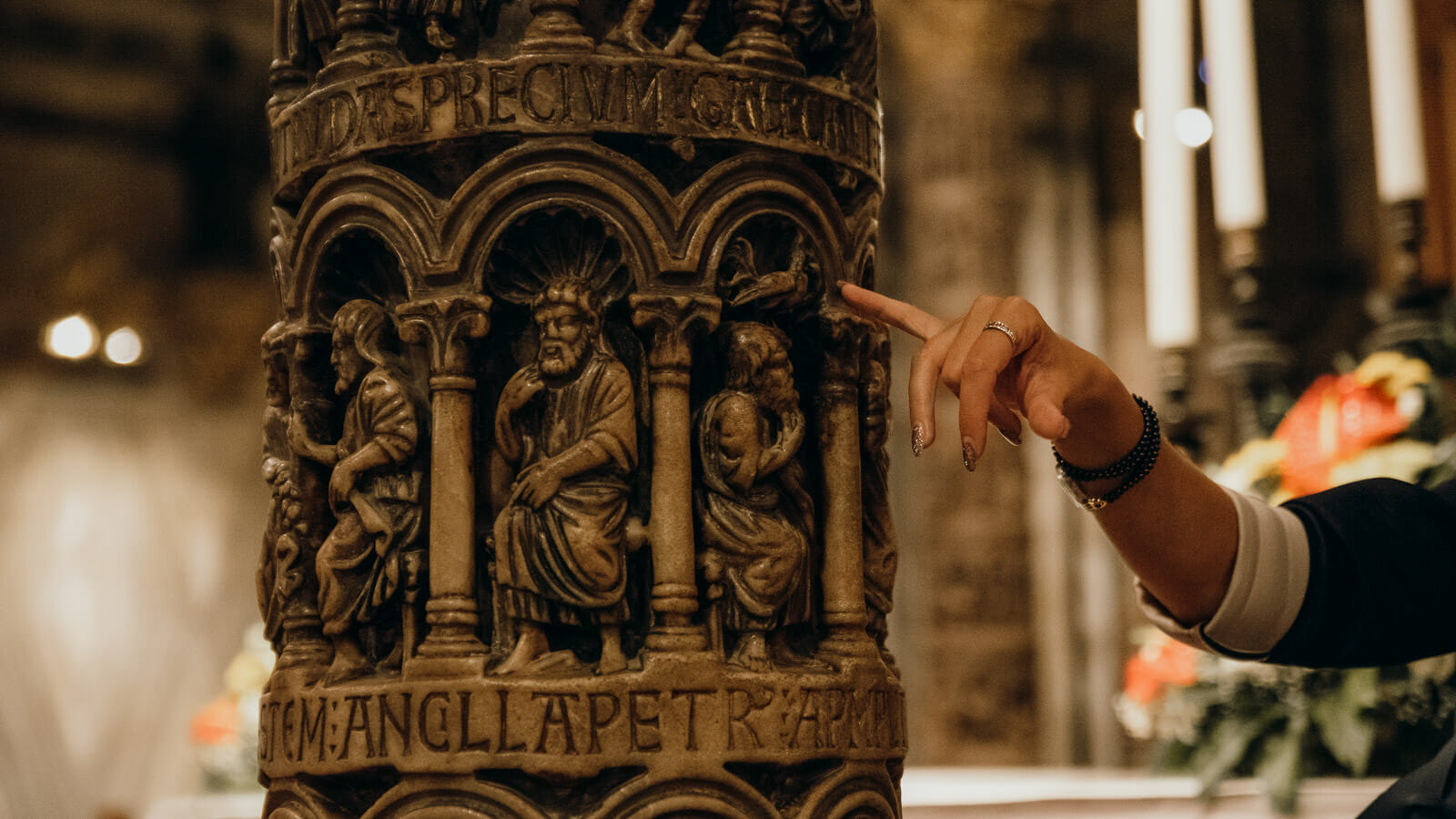
5 Incredible Churches in Venice That Unlock the History of the Floating City
July 16, 2025
Like any Italian city, you might notice Venice has quite a few churches. It’s hard to take a road without running into at least one. Venice has in fact at least 139 churches on its floating islands. And in Italy, churches are much more than religious establishments; they open windows to a city’s past and showcase Venetian architecture. When you start to think of each chiesa and basilica as a walk-in museum, filled with religious art and layered stories from Venice history, you won’t want to miss these beautiful – and historic – churches in Venice. For those interested in exploring further, you will find wonderful church tours available, giving you a closer look at centuries-old cathedral mosaics and masterpieces that have shaped the city’s identity.
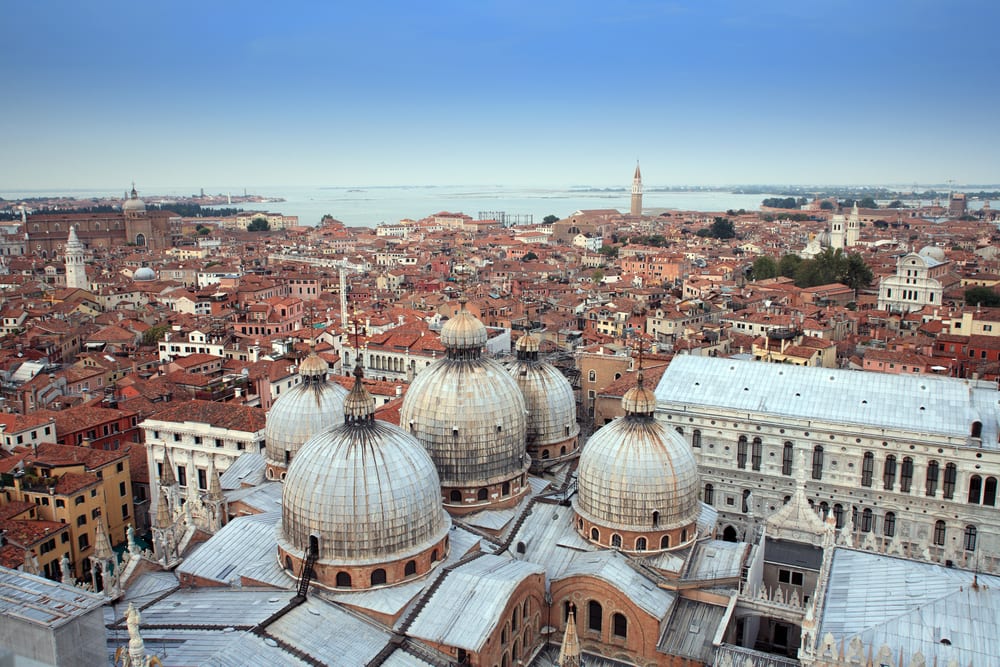
Table of Contents
ToggleThe culture of Venetian churches
As you wander through these gorgeous Venetian churches, you will notice that many stand adjacent to what locals call “scuole.” These were actually guilds or confraternities: groups of artisans in a similar profession, or people connected by religion. They gathered in these areas to discuss charitable and religious endeavors and often commissioned a church dedicated to their patron saint.
Merchants also commissioned many Venetian churches, dedicating a chapel to their families or saints. As a result, you can see over ten centuries of architectural styles through the churches of Venice. Excitingly, you can compare the evolution of art and architecture over this time. The influence of Venetian architecture shines in their grand facades and interiors, where religious art and local history intertwine.
Now that you’re prepped, come along and discover our favorite churches in Venice!

What’s the difference between a chiesa, duomo, and basilica?
Have you ever noticed churches in Italy come with all different names? Some go by duomo like the Duomo di Milano, others carry the title basilica, like the Basilica di San Marco, while many simply use chiesa. But how do they get these names and what sets them apart?
- The word basilica actually comes from Greek, meaning “house of the king” (God). While you could apply this to any church, people usually reserve it for churches of higher importance, either religiously or artistically. These buildings always feature a central nave with two adjacent halls lined with smaller chapels, sometimes adorned with breathtaking cathedral mosaics.
- A duomo stems from the Latin Domus, or house. This term usually designates the most important church in a city. While the Vatican might label a church a basilica thanks to its construction or significance, the local city might call it a duomo to identify the principal local church.
- Finally, you find everything else labeled as a chiesa.
Armed with this info, you can fully enjoy exploring all the amazing churches in Venice, whether you admire their Venetian architecture, marvel at religious art, or join one of the many church tours available.
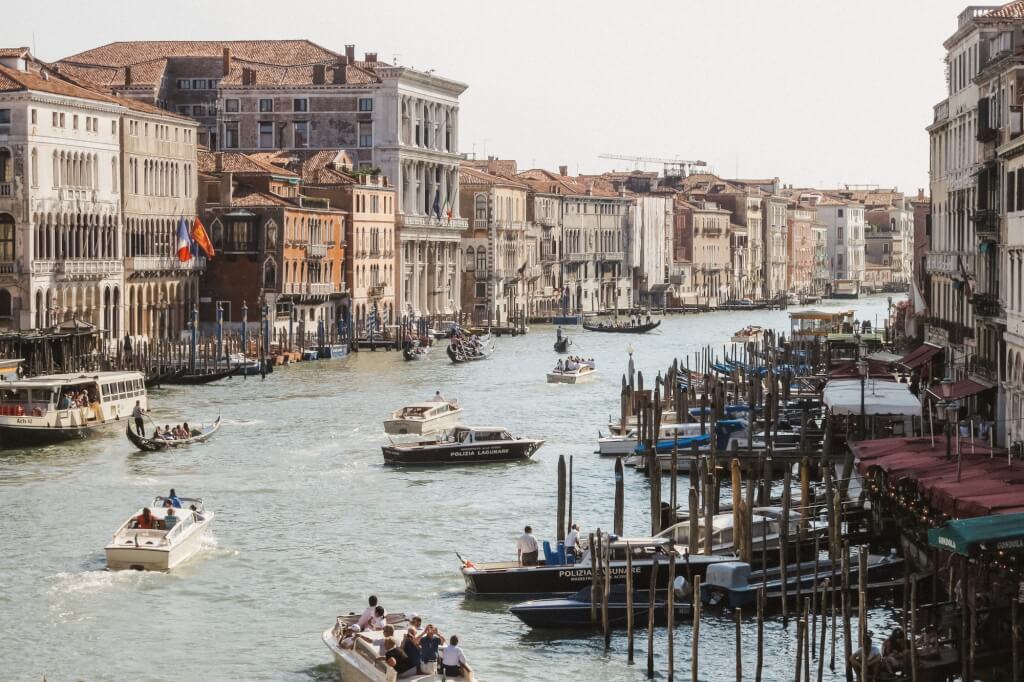
5 stunning Venetian churches you can’t miss
San Zaccaria
The Church of San Zaccaria stands in Castello, just across the bridge and around the corner from Piazza San Marco. In front of it, you’ll find a small piazza, known as a campo in Venice. Construction on the church we see today began in 1444, but workers did not complete it for 60 years. Then, another 40 years passed before the church received official consecration.
Already, the facade impresses every passer-by. Made of the best Istrian stone, it divides into five sections, known as orders. The lower two follow a late-Gothic style, while the upper, completed by a successor architect, embrace a Renaissance style. The church beautifully compares harsh rectangles with softer archways, providing a testament to the evolving trends in Venetian architecture.
Inside, the church dazzles even more. You must see the Madonna Enthroned with Child and Saints by Giovanni Bellini, also known as the San Zaccaria altarpiece. This piece marks an early example of Italian artists beginning to explore depth and moving into a new artistic style. As you look around, you will spot even more works by Tintoretto, Van Dyck, and other leading artists of the time. For fans of religious art, this chiesa should rank high on your list.
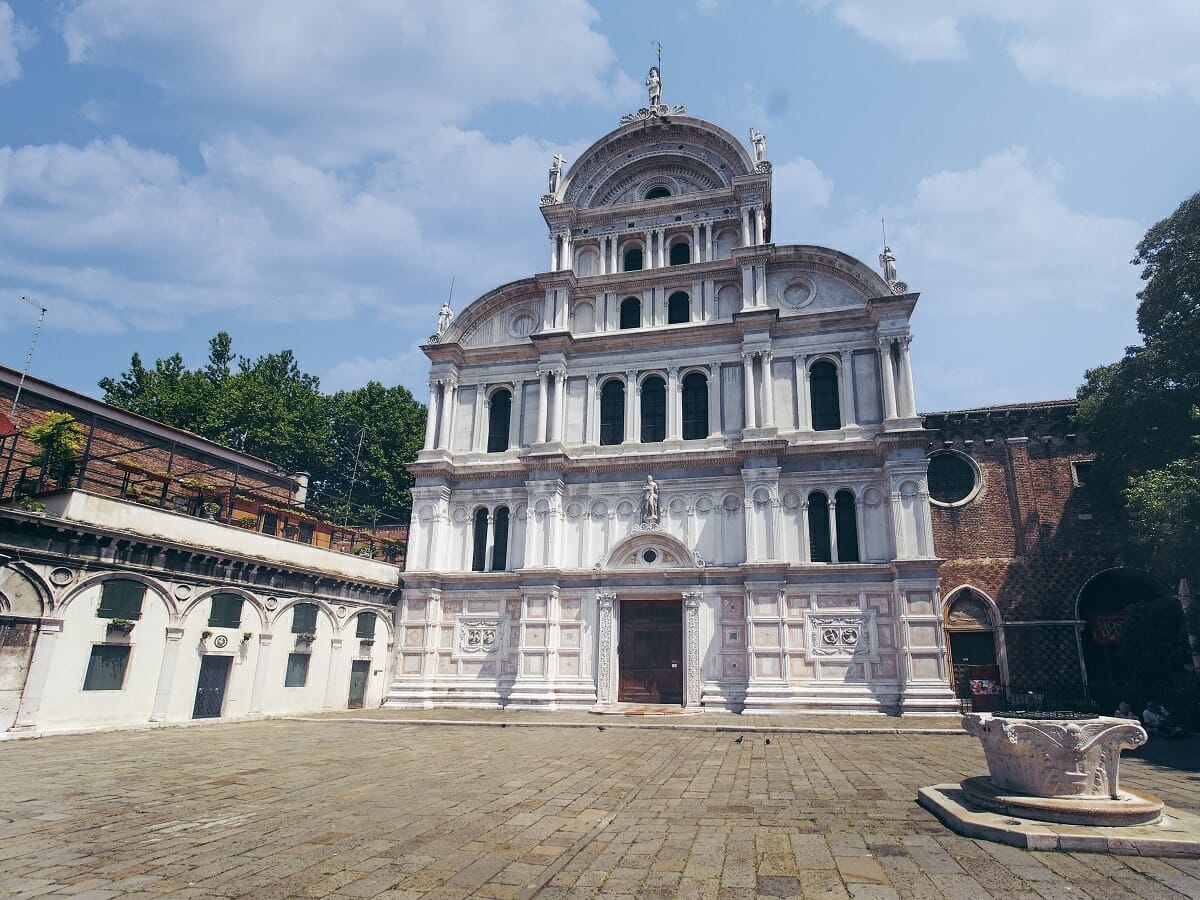
Basilica of Santa Maria della Salute
The Basilica of Santa Maria della Salute also ranks among our favorite churches in Venice, and for good reason. This stunning basilica, which you can see in the unmistakable Venetian skyline from the Ponte dell’Accademia, boasts a more modern touch than others.
Built in the 17th century at the far tip of the Dorsoduro area, construction began in 1631 and finished in 1687. The basilica’s curious octagonal shape, rather than a cross, sets it apart. Baroque-style buttresses support the towering dome, and Istrian stone makes the busy facade shine.
You will notice this church is not just dedicated to Mary, but to “Saint Mary of Health.” City officials ordered its construction after a plague in 1630, which wiped out nearly a third of the local population. The church has become renowned for its impressive collection of religious art and the striking Venetian architecture that defines its silhouette.
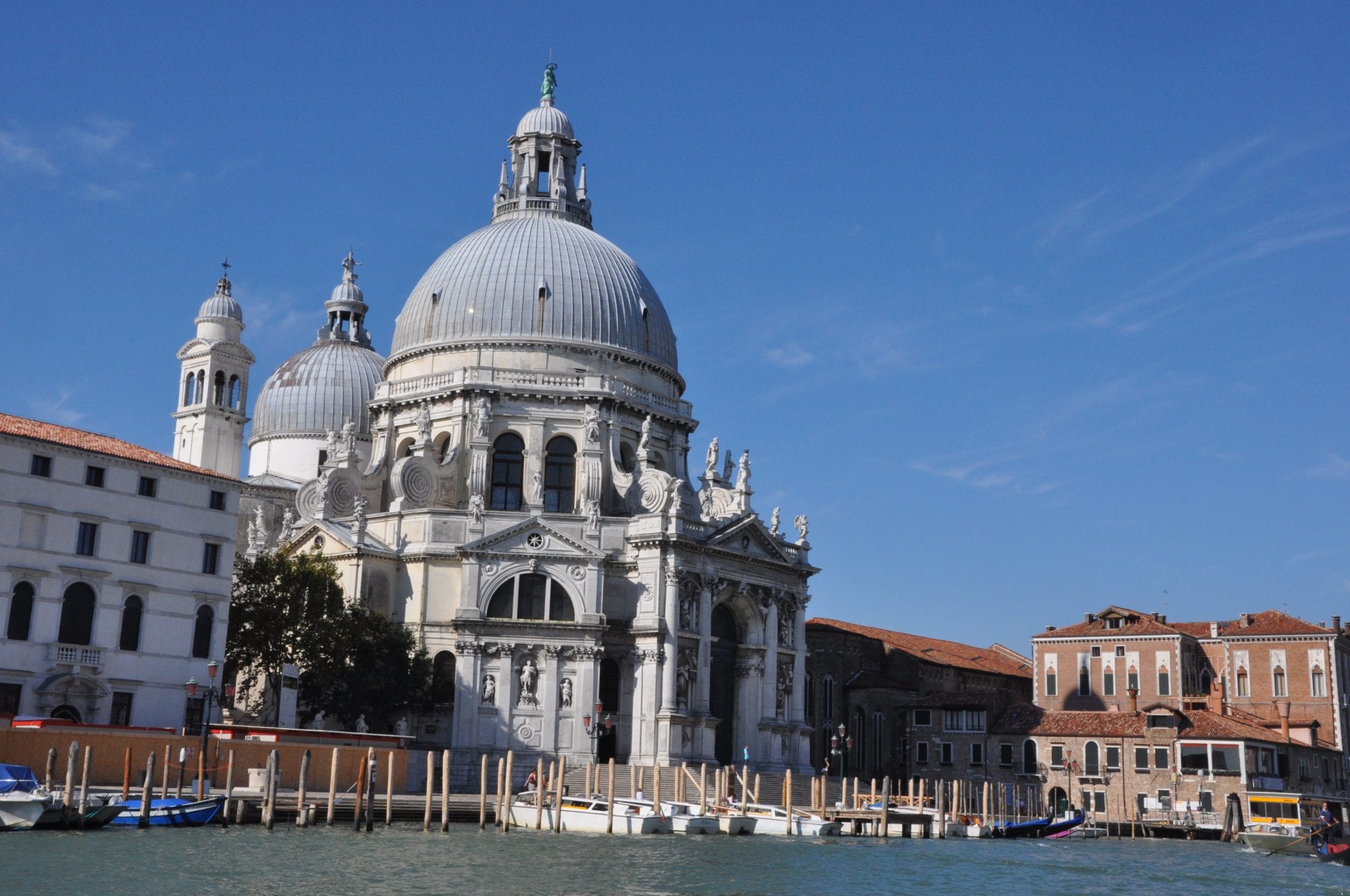
Basilica di San Marco
Of course, we cannot forget the incredible St. Mark’s Basilica, the star of Venice. This is the main church of Venice and the most stunning you’ll find on the islands.
Originally, another church stood here in 828, but turmoil in the republic led to its destruction and rebuilding. The current basilica dates to 1063 and received consecration in 1094. However, artists did not finish the full decoration until later. The shining mosaics inside did not reach completion until nearly the 1200s, with the domes coming even later.
Workers did not consider the facade complete until the 15th century, and the church as a whole only achieved final completion in the 16th century.
Although you may have to wait in line to enter, you will find it worth every moment. You will marvel at the dazzling Byzantine decoration—glimmering gold mosaics and ornate details on every surface. If you seek some of the most stunning cathedral mosaics in Italy, you must visit this church.
Another, somewhat sad, thing to notice when entering: you can truly sense how Venice is sinking. As you walk around, you will notice dips and bumps in the floor, caused by the weight and shifting foundations.
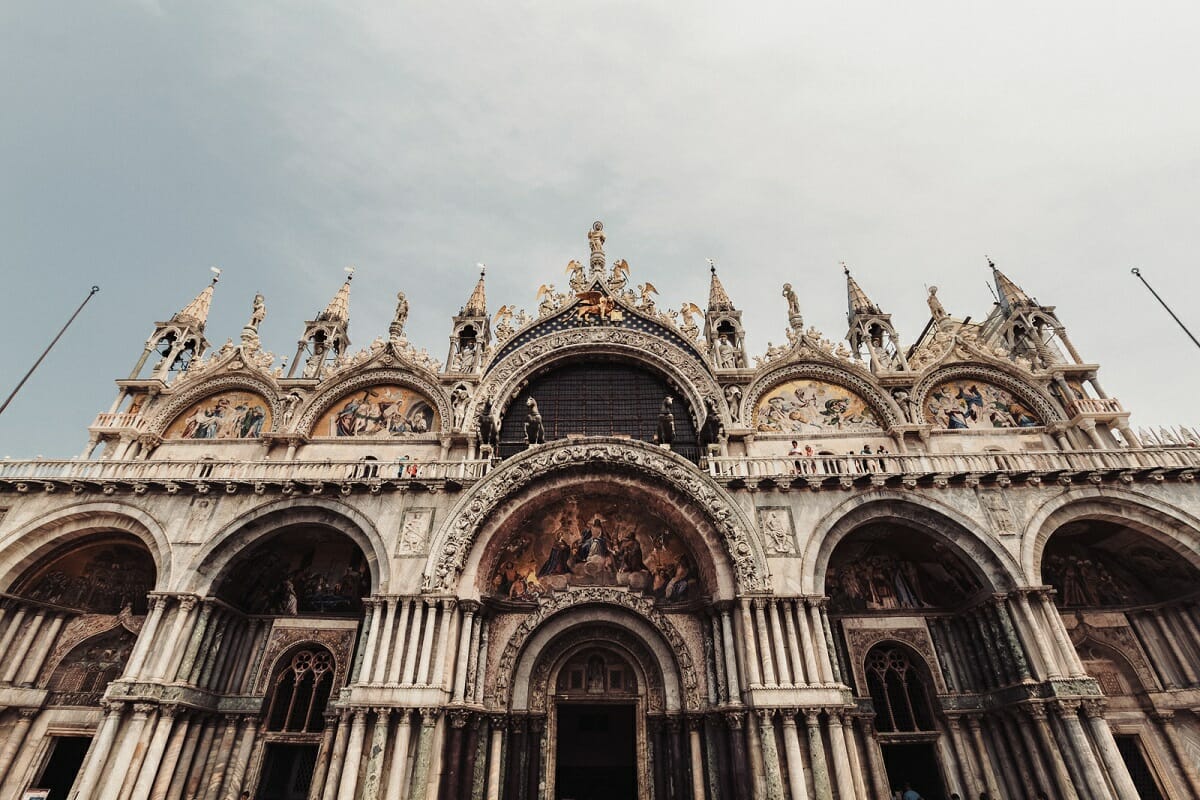
Basilica of Santa Maria Gloriosa dei Frari
You may hear this church referred to in a few different ways: while its official name is Basilica di Santa Maria Gloriosa dei Frari it often goes simply by Basilica dei Frari.
Frari means Friars in local Venetian Dialect, so, as you might imagine, the Franciscan Friars managed this church. They commissioned its construction in 1250. The humble facade, in Italian Gothic style and constructed entirely in brick, reflected both the period and the Friars’ values of poverty and simplicity.
Don’t let the outside fool you. This church, one of the largest in Venice, dazzles on the inside. When you step in, you’ll quickly spot masterpieces by Titian, Giovanni Bellini, and Donatello. You will also find one of our favorite works by Bartolomeo Vivarini—his Madonna and Child with Saints polyptych shines with brilliant colors for its age and begins to show experimentation with the human body and depth.
In fact, artists loved this church so much that two famous painters chose to be buried here! Before you leave, make sure to visit the final resting grounds of Titian and Antonio Canova. Whether you love art or admire Venetian architecture, the Basilica dei Frari is a must-see.
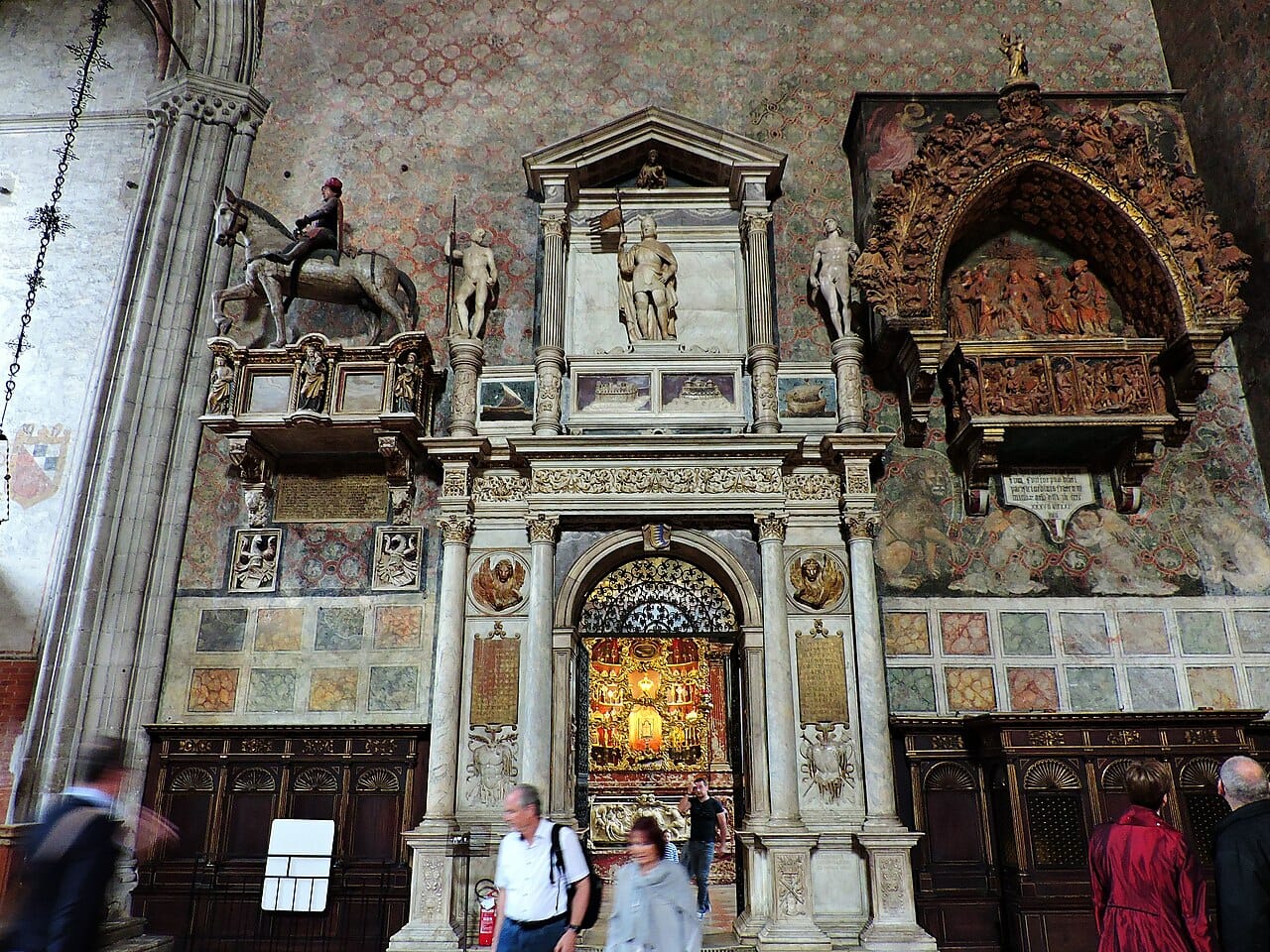
San Pantalon
Locals also call this church the Chiesa di San Pantaleone Martire. From the outside, it might seem unassuming—a towering brick facade with no decoration. You will find it tucked away near the University Ca Foscari, right in the center of Venice.
However, you won’t want to skip out on this church. When you step inside, you will gaze at the beautifully painted ceiling. “The Martyrdom and Apotheosis of St Pantalon” by Gian Antonio Fumiani, completed at the end of the 17th century, creates a dramatic effect—dark shades and a bright sky make you feel you have stumbled into the scene and stand in awe beneath the towering figures.
As you walk around, you’ll spot even more works by favorite local artists like Veronese, Antonio Vivarini, and many others. For those interested in both religious art and the changing trends of Venetian architecture, this chiesa is a lesser-known treasure.
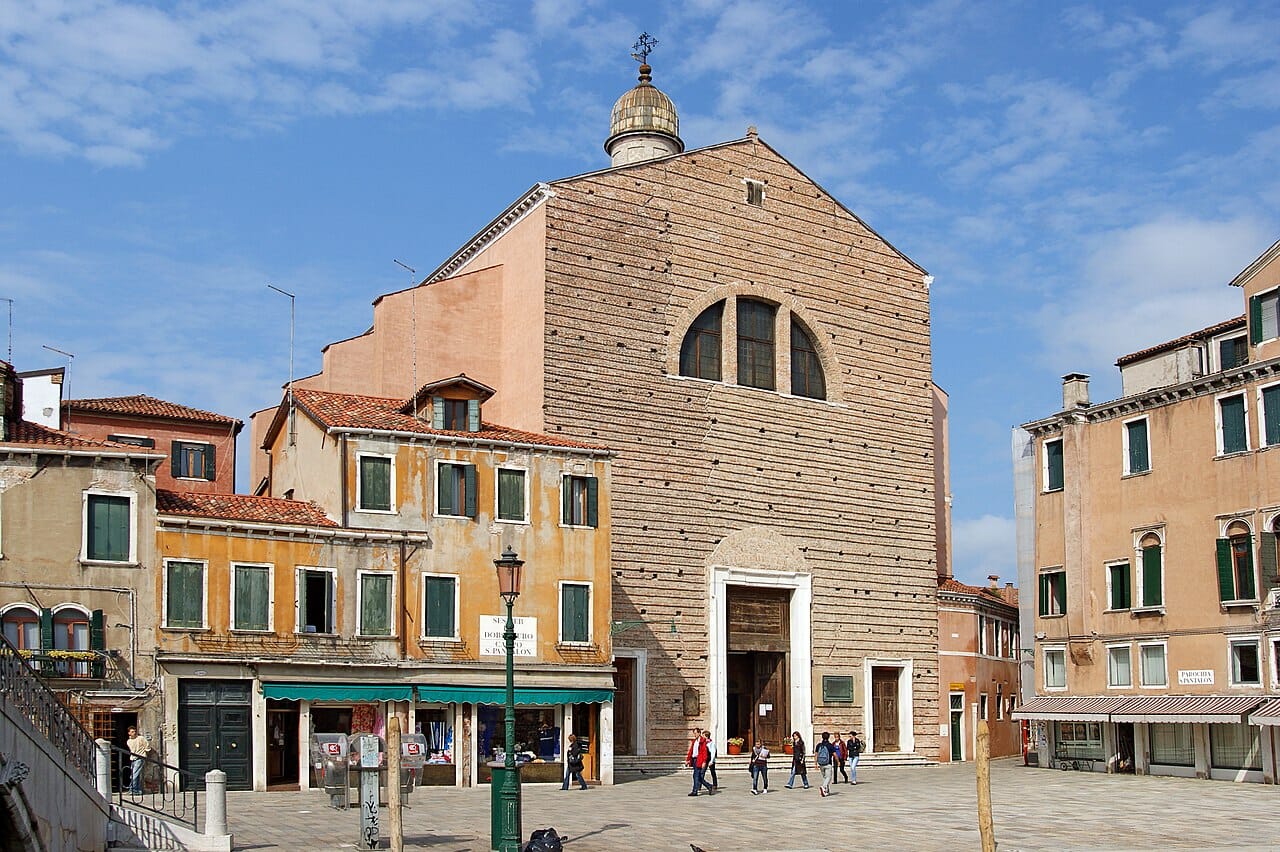
Best ways to visit churches in Venice
Remember that in Italy, many churches require you to dress appropriately. If it is a hot day and you plan on wearing shorts or something that shows shoulders or midriff, simply pack a light scarf to bring along!
Buy a Chorus Pass for a self-guided experience
Many churches offer free entry. However, 16 churches, managed by the Chorus Association—including San Zaccaria—charge a small fee. You can:
- Pay a few Euros for single admission
- Buy a pass to enter all 16 churches for €12
- Contact the association at [email protected] for more information
Join our exclusive, small group tours with expert guides
We offer several after-hours and exclusive experiences. For example, you can join the VIP Doge’s Palace Secret Passages Tour & St. Mark’s Basilica, where your guide will give you a full tour of this impressive church—highlighting the east-meets-west architecture and the eye-popping gold mosaics.
Another great option is our Exclusive Alone in St. Mark’s Basilica After Hours tour, which lets you explore the city’s most important Venetian church completely alone!
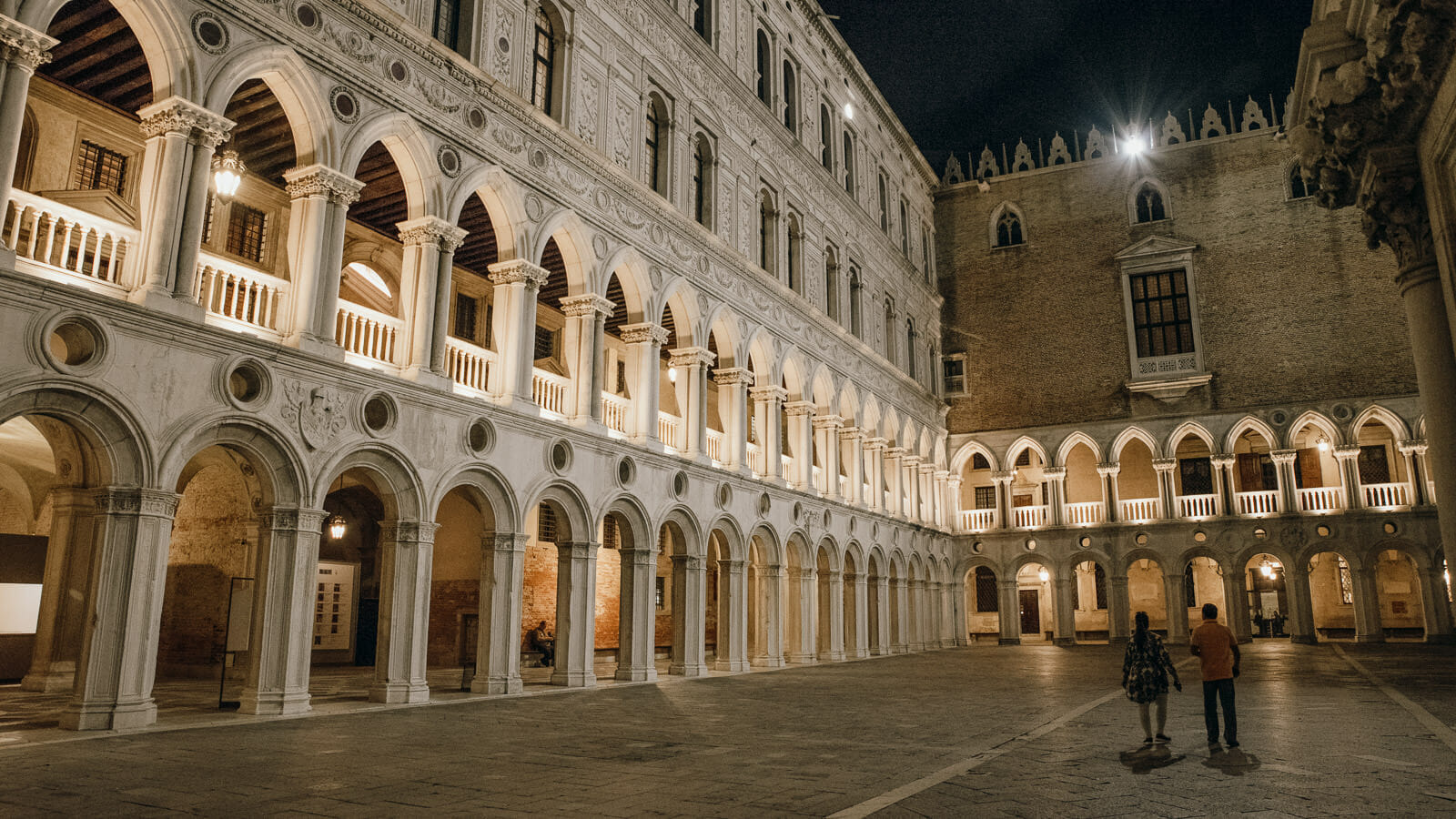
Frequently Asked Questions
Are there guided church tours available in Venice?
Absolutely! Venice offers a variety of church tours. You can choose from self-guided experiences with a Chorus Pass or small group tours led by expert guides. These tours always highlight the city’s Venetian architecture, religious art, and unique cathedral mosaics, giving you a deeper appreciation for Venice history.
What makes Venetian architecture unique in its churches?
Venetian architecture famously blends influences from the East and West. As a result, you will see churches with striking domes, ornate facades, and intricate mosaics. Many churches, such as St. Mark’s Basilica and Santa Maria della Salute, showcase this blend, making each visit a visual treat.
Can I see religious art and cathedral mosaics inside Venice churches?
Definitely. Many Venetian churches house outstanding religious art, including paintings, sculptures, and some of the world’s most famous cathedral mosaics. St. Mark’s Basilica, in particular, is renowned for its shimmering mosaics, while churches like San Zaccaria and the Frari display masterpieces by Bellini, Titian, and more.
Is there a dress code for visiting churches in Venice?
Yes, Italian churches require modest dress. Shoulders and knees must stay covered, so you should bring a light scarf or shawl, especially during the warmer months.
Ready to explore Venice’s extraordinary churches for yourself? Whether you feel drawn by the allure of Venetian architecture, religious art, or the promise of an unforgettable church tour, the city’s sacred spaces are waiting to welcome you.
by Evelyn Hill
View more by Evelyn ›Book a Tour

Pristine Sistine - The Chapel at its Best
€89
1794 reviews

Premium Colosseum Tour with Roman Forum Palatine Hill
€56
850 reviews

Pasta-Making Class: Cook, Dine Drink Wine with a Local Chef
€64
121 reviews

Crypts, Bones Catacombs: Underground Tour of Rome
€69
401 reviews

VIP Doge's Palace Secret Passages Tour
€79
18 reviews

Legendary Venice: St. Mark's Basilica, Terrace Doge's Palace
€69
286 reviews









